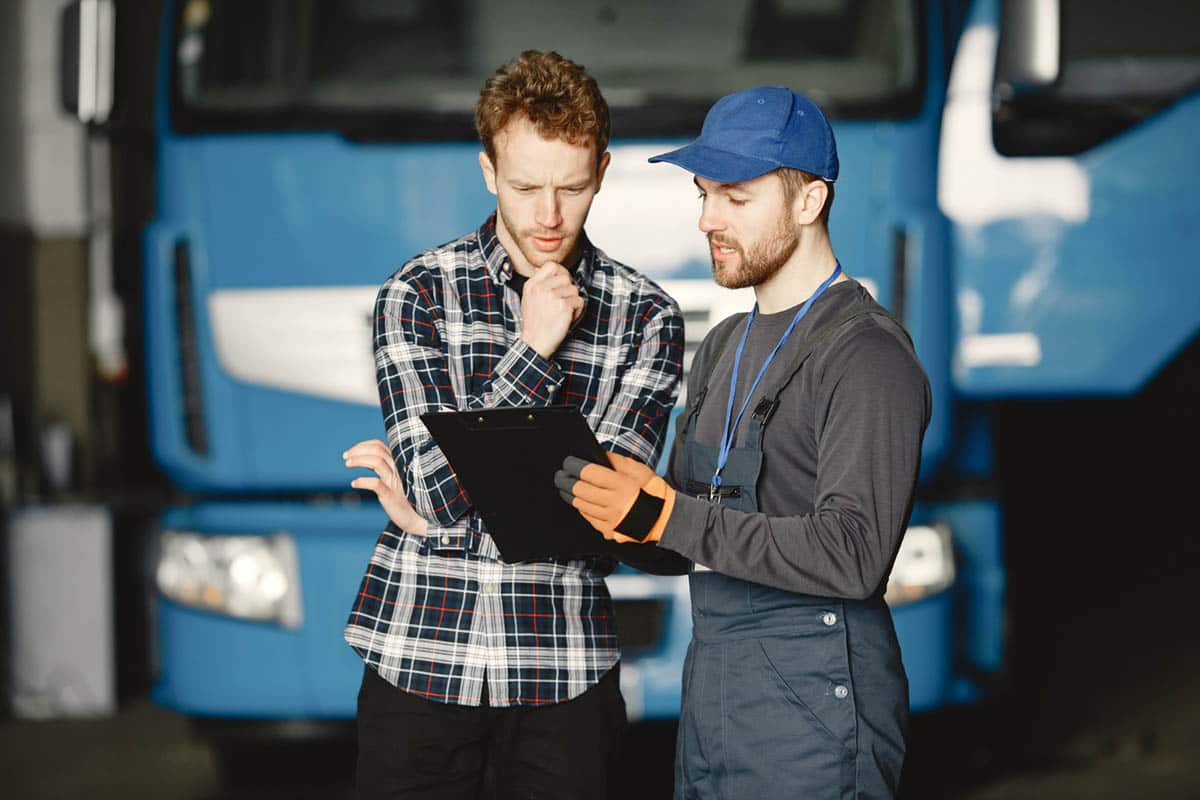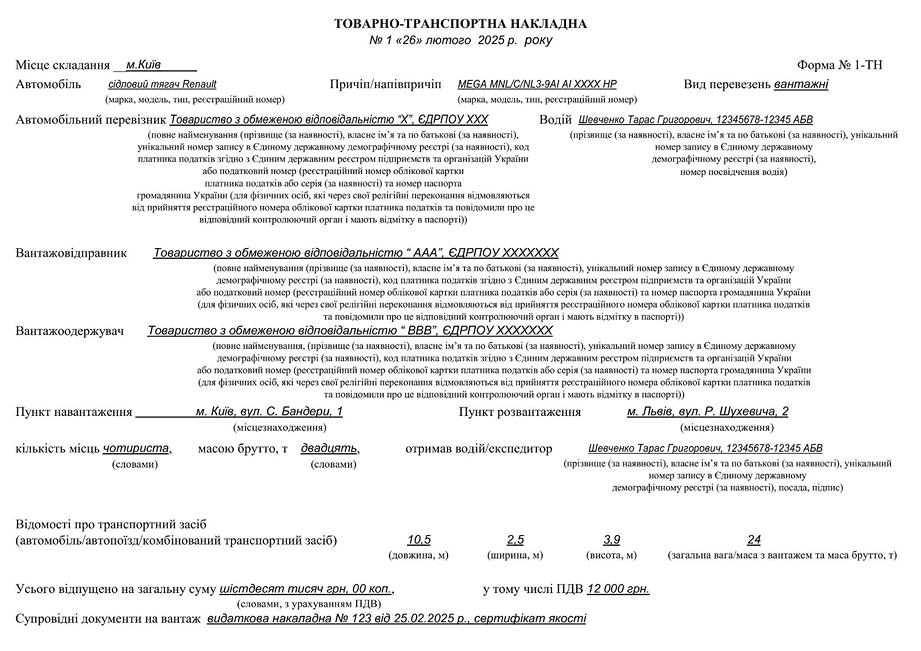
Article content:
The waybill not only confirms the fact of cargo transportation but also serves as a basis for financial and accounting records. In this article, we will cover everything about the primary waybill document: what it is, why it is necessary, how to issue it, and what nuances should be considered.
What does "Waybill" mean? It stands for "Goods and Transport Invoice," serving as a crucial accounting document in freight transportation. Essentially, it is the primary legal confirmation of the transaction for transporting goods, used to track and accompany the movement of goods. A waybill is issued for any transportation, whether within the country or internationally. The document verifies the fact of transferring goods from the sender to the carrier, and then to the recipient. For instance, if goods are shipped from China to Ukraine, a waybill must be issued for the transportation.
What is the difference between a goods and transport invoice and a transport invoice? The first is used to record goods, their value, and all parties involved in the transaction—the sender, carrier, and recipient. The latter records only the fact of goods transportation and is typically used for the carrier's internal purposes. Thus, a waybill includes more data, including accounting details, and covers broader aspects of the transportation process.
Starting from January 3, 2025, a new form of the consignment note (TTN) has been approved in Ukraine. Now it is required to specify:
In the fields “Consignor”, “Carrier”, and “Consignee”, according to the new requirements, it is necessary to indicate not only the company name or full name but also the taxpayer code according to the Unified State Register of Enterprises (EDRPOU) or the individual tax identification number.


A waybill is required for all types of goods transportation between legal entities. The main functions of the waybill in freight transportation are as follows:
Why is a waybill necessary? It is used to account for goods and services at all stages of transportation.
Filling out a waybill requires accurate completion of all necessary fields:
How to correctly fill out a waybill? To do this, it is necessary to follow the rules for completing all sections of the document and ensure the accuracy of the entered data. The logistics company provides a waybill template to help correctly fill in all fields. It is important that the document is completed in accordance with established standards, as errors in filling it out may lead to delivery delays or fines during inspections.
Key elements of the waybill:
What is a waybill series? It is an additional identification element used for the classification and organization of waybills, especially in companies involved with private transport. It is assigned to facilitate the tracking and accounting of waybills in logistics and bookkeeping.
Who issues the waybill? The consignor is responsible for issuing waybills, although this duty may sometimes be transferred to logistics companies. In this case, all parties involved (the consignor, carrier, and consignee) sign the document to grant it legal status.
The main issues if the waybill is incorrectly completed:
In Ukraine, responsibility is placed on the shipper, as they are in charge of completing the waybill. However, the carrier is responsible for the accompanying documents during transport. For example, the actual weight data of the vehicle. For exceeding by 10%, the fine is 17,000 UAH, and for 30% or more — 51,000 UAH.
The international waybill for cargo transport is called CMR. This document is used in countries that have joined the Convention on the Contract for the International Carriage of Goods by Road (CMR).
Mistakes and inaccuracies in the completion of the waybill lead to fines, returns, or delays. Therefore, it is advisable to seek assistance from logistics companies and those offering brokerage services.
Who Completes the Waybill in Ukraine?
DiFFreight takes full responsibility for completing the waybill, including verifying all the data and submitting documents electronically.
What We Do to Minimize Risks for Our Clients:
Recently, Ukraine began transitioning to electronic forms of the waybill — e-Waybill. This document is completed and signed with a digital signature. The use of e-Waybill speeds up the completion process and avoids mistakes typical of paper documents. All parties need to understand what a waybill is in freight transport and the standards for completing the waybill.
A TTN (товарно-транспортна накладна / consignment note) is an official document confirming the transfer of cargo from the sender to the carrier and outlining the transport conditions.
The sender prepares the TTN, while the carrier and recipient sign it during cargo handover and acceptance.
A TTN must include: sender and recipient details, description and quantity of goods, weight, transport conditions, vehicle details, and signatures of all parties.
A TTN serves as proof of transport, is required for tax and accounting purposes, and can be used to resolve disputes.